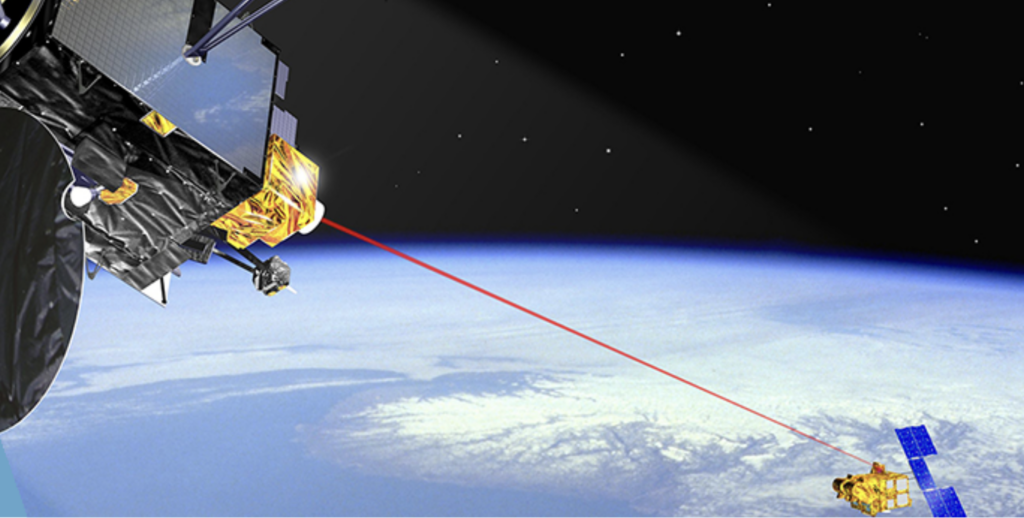
The success for the Mandrake 2 experiment is good news for the Space Development Agency's effort to build a mesh network in space
WASHINGTON – Two small satellites launched last summer by the Defense Advanced Research Projects Agency successfully established an optical link on April 14 during a nearly 40-minute test, according to CACI International, the supplier of the optical terminals.
More than 200 gigabits of data were transmitted and received over a distance of about 100 kilometers, the company said May 17. Optical terminals use lasers to connect satellites in orbit so they can transfer data in space.
DARPA’s experiment called Mandrake 2 was funded by the Space Development Agency and the Air Force Research Laboratory. The success of the demonstration is significant as space-to-space optical communications is a critical technology for DARPA’s Blackjack constellation and for SDA’s planned mesh network of small satellites in low Earth orbit that will support military operations.
SDA Director Derek Tournear said the agency set a goal to build a mesh network known as Transport Layer using commercially available satellite buses and laser terminals. The success of the Mandrake 2 experiment validates that strategy, he said.
“We demonstrated with commoditized laser communication that we could do satellite to satellite communication, and really demonstrated that this is no longer at the very high end, that we can actually do this with commoditized laser communication platforms and technologies,” Tournear said May 17 at a Potomac Officers Club online event.
SDA this fall plans to launch 20 satellites for the Transport Layer Tranche 0. In 2024, it will start launching Tranche 1, a much larger deployment of 126 satellites. “We don’t have optical cross links on every one of our Tranche 0 satellites. But we do on Tranche 1,” Tournear said.
The Tranche 1 satellites will have optical laser communication not only for satellite-to-satellite crosslinks but also for satellite-to-ground communications, as well as satellite to airborne platforms, he said.
SDA satellite suppliers — Lockheed Martin, Northrop Grumman and York Space — have not disclosed their laser terminals suppliers. Companies like CACI, Mynaric, Tesat and others said they are looking to ramp up production to support SDA’s planned procurements.
As optical terminals get mass produced, said Tournear, “we can definitely buy those almost off the shelf and integrate them in the kinds of timescales and cost points that we need.”
SDA’s efforts to demonstrate optical crosslinks suffered a setback last year when an experiment using General Atomics satellites and laser terminals failed in orbit. Two cubesats equipped with optical communications terminals flew to space but tumbled out of the intended orbit and the company was unable to establish contact with the satellites.
"low" - Google News
May 18, 2022 at 04:13AM
https://ift.tt/w2sCBmt
Military experiment demonstrates intersatellite laser communications in low Earth orbit - SpaceNews
"low" - Google News
https://ift.tt/5kfIKCe
Bagikan Berita Ini














0 Response to "Military experiment demonstrates intersatellite laser communications in low Earth orbit - SpaceNews"
Post a Comment